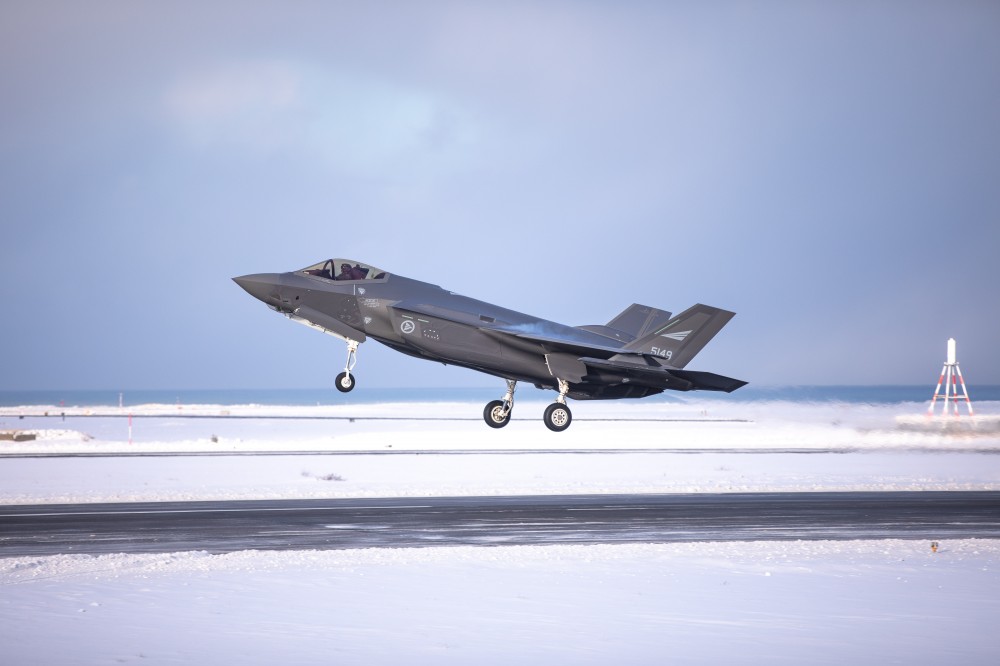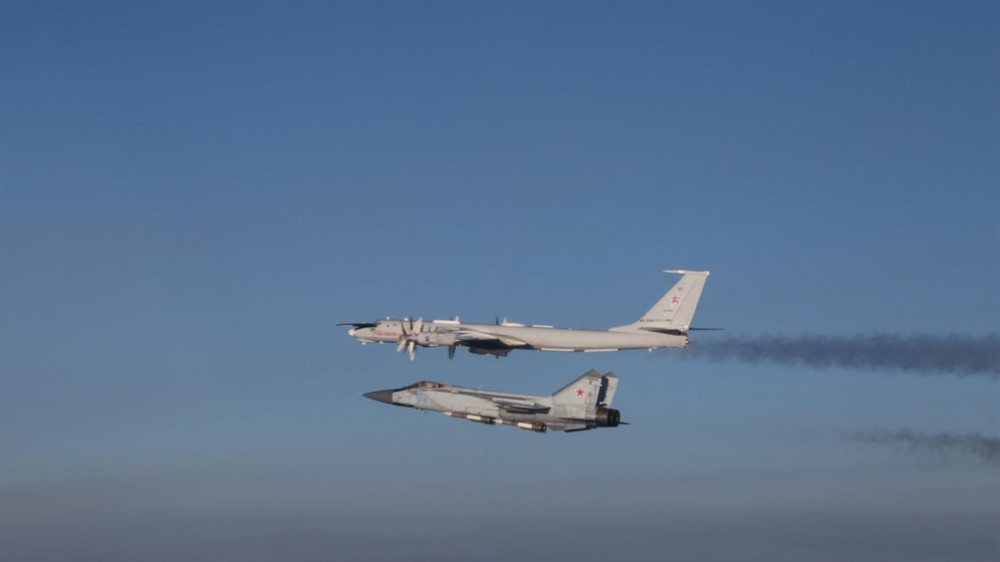Norway’s new F-35 scrambled for first time to meet Russian anti-sub aircraft
It's the second time in recent weeks Russian military aircraft have flown so far south in the Norwegian Sea.

A pair of Norwegian F-35 fighter jets from Ørland air base and two F-16s from Bodø followed two Russian Tu-142s and one MiG-31 over the Norwegian and North Sea Saturday.
For the second week in a row, Russian maritime reconnaissance and anti-submarine warfare aircraft are flying much further south into the so-called GIUK gap (Greenland-Iceland-UK) than normal. GIUK is the area in the northern Atlantic that forms a naval choke point, important for the Russian navy in case of a conflict.
The planes on Saturday came from the north and were first noticed by the air control station in Sørreisa, northern Norway, according to the Joint Headquarters.
Two F-16s from Bodø air station, north of the Arctic Circle, were scrambled to identify the Russian planes. When continuing further south outside Norwegian air space, another two F-35s took off from Ørland air base in southern Norway.
“The Armed Forces yesterday established reinforced extra F-35 preparedness from Ørland air station to enhance sovereignty,” said Chief of the Norwegian Air Force, Major General Tonje Skinnarland.
Flying wing-by-wing, the event in the skies outside Norway on Saturday is historic. This is the first time Norway’s new F-35s were identifying Russian planes.
Even further south, over the North Sea, two British Typhoon fighter jets took over the mission to monitor the Russian planes.
Norway’s F-16s from Bodø, the F-35s from Ørland and the British Typhoons are all part of NATO’s Quick Reaction Alert.
Anti-sub warfare planes from the Russian navy are normally flying the Barents Sea and northernmost parts of the Norwegian Sea. On February 26 and 27, however, the planes flew much further south over the Norwegian Sea than normal, and did so again on Saturday March 7.

The Russian Northern Fleet’s Tu-142 anti-submarine aircraft is a maritime patrol version of the Tu-95 strategic bombers. The main aim of the planes is to hunt NATO submarines and electronic intelligence.
Saturday’s flights with the Tu-142s lasted for more than 13 hours and were supported by mid-air refueling from a Il-76 tanker aircraft, according to the press service of the Northern Fleet.
The MiG-31 was only following the anti-submarine aircraft for parts of the route and not all south to the North Sea.
It is not known how many NATO submarines that currently are sailing the North-Atlantic, but navy ships from several NATO members are currently in Norway, bringing in supplies to the multinational exercise Cold Response.
The exercise takes place in northern Norway and will last until March 18.
Norwegian Air Force is currently in a transition period and will maintain the F-16s on QRA for NATO at Bodø air base until 2022. Then, a few F-35s will be stand-by from Evenes air base in northern Norway, while the main bulk of the F-35s will operate from Ørland air base.
By 2025, all F-16s will be retired and the new fleet of 52 F-35s fully operative.
The Norwegian Air Force has so far received 15 new planes, of which four are currently based at Keflavik, conducting NATO’s Air Policing mission in Iceland.